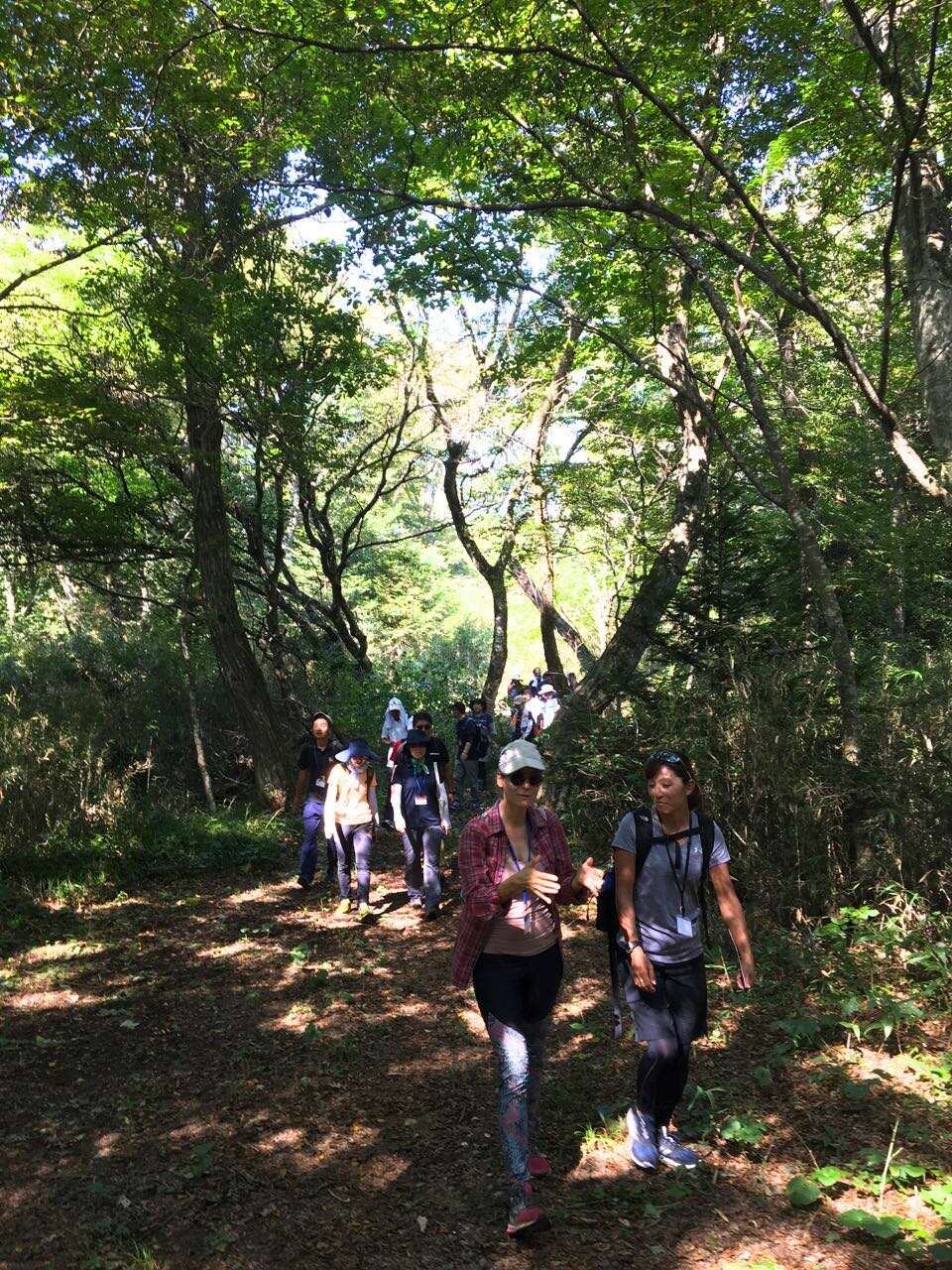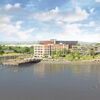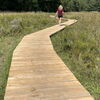
Portland Trails becomes an international case study
 Courtesy / Portland Trails
Officials in Miyagi Prefecture, Japan, consider Portland’s trails to be a model for building community and tourism. Seen here is a section of the Portland Trails network.
Courtesy / Portland Trails
Officials in Miyagi Prefecture, Japan, consider Portland’s trails to be a model for building community and tourism. Seen here is a section of the Portland Trails network.
Portland Trails Executive Director Kara Wooldrik traveled to Japan as part of an international team consulting with local officials on the role trail networks can play in disaster recovery and community development.
The team of six trail experts, from five countries, was invited to Miyagi Prefecture, which was devastated by the 2011 earthquake and tsunami that resulted in the Fukushima Daiichi nuclear disaster. The team spent a week walking the area and leading workshops with local government officials.
Wooldrik told Mainebiz that a highlight of the trip was participating in the opening of a new trail in the prefecture, attended by over 500 people and including ceremonies with government officials, a walk of the entire trail and sumo wrestlers handing out bowls of soup to guests. The team also helped celebrate the one-year anniversary of a second trail and explored the site of a future trail.
The invitation came about through Wooldrik’s connection to the World Trails Network. The visit took place in late September.
“Myagi Prefecture was ground zero,” Wooldrik said of the 2011 disaster. “They had to rebuild everything. Many communities are still trying to figure out how to bring families back.”
Myagi is also hoping to restart its tourism industry.
“They want to build trails to help with tourism,” she explained. As part of that, she said, she was able to offer insights into the community-building nature of constructing trails.
“I was trying to help them think about involving local community members in the vision, design and maintenance of trails and how that might help create community bonds between people,” she said. “How do you rebuild a community emotionally and create resilience? We were looking at how to involve local people and businesses.”
The Portland Trails model
Community-building is a theme at Portland Trails.
Since 1991, the nonprofit has been creating a trail system, totaling over 70 miles, that connects neighborhoods in Portland, South Portland, Westbrook and Falmouth. Funded mostly with private dollars, the group is supported by about 2,000 volunteers. The trail system is used by more than 1 million people each year.
“We were founded as a land trust focused on land conservation and recreation,” Wooldrik said. “We quickly transitioned, because of our environment being more urban, to thinking about our trails as part of the transportation network.”
The focus is on how to create healthier communities in terms of environment, people, neighborhoods and economy.
“A walkable and bikeable community will be a more economically thriving community,” she said. “Whether that’s using trails or using trails that connect to sidewalks or to the metro bus, it will be healthier for humans because they’ll walk and bike more.”
For example, more than 20 years ago in the North Deering section of Portland, the group built its first school path, the Pine Grove Trail. It was designed by third-graders at Lyseth Elementary School and involved hundreds of other students from Lyseth and Lyman Moore schools in its construction. The trail is positioned to connect the schools and neighborhoods to each other and to provide greater access to Pine Grove Park. The wooded trail shortens the walking distance to school and avoids traffic along Allen and Washington avenues.
Business buy-in
The organization meets with employers as well, to get input on trail construction that would make non-motorized employee commutes more pleasant, Wooldrik said.
The majority of volunteers come through business partnerships.
“WEX sends groups regularly,” she said. “Their finance department comes one month and their legal department comes another month.”
She added, “We feel the community being involved is the most important thing for this to be sustainable, for people to realize all the physical connections they can make to the places they want to be. So we prioritize the volunteer piece and make sure we’re working with a lot of different folks and make sure they have some relationship with the trails.”
Myagi connections
In Myagi, she advised on the creation of trails that functioned as a part of the local transportation network for local use as a primary focus, with tourism as a related benefit, she said.

“You need local people to buy in for something to be of community pride,” she said.
As part of its visit, the team visited a trail that had been in operation for a year.
“We could see where transportation and ecological improvements could be made,” she said.
For example, the trail had a start and finish, but neither was connected to the public bus system.
“So a tourist could get a rental car, go to the start and walk to the end, but how do they get back to their car?” Wooldrik said. “From the transportation perspective, we looked at how they could make it easier for locals and tourists.”
They visited a national coastal and island trail some 300 kilometers long that had opened just a couple of months previously.
“The national government saw that as an opportunity for economic development and for emotional recovery,” she said.
And they visited the site of a proposed trail through a wooded area.
“We suggested they think about community connections — connect this to nearby neighbors, to where kids go to school, to the community center,” she said.
Following the team’s work in Japan, she co-facilitated a workshop at the Asia Trails Conference in Busan, South Korea, on how to create town-city trail networks. The conference was attended by 300 participants from more than two dozen countries across Asia. Wooldrik presented Portland Trails as a case study for urban and town trails.
Many of the challenges faced by areas of Japan and South Korea are the same in coastal Maine, she said.

“All of our cities and coastal communities are facing similar climate change challenges,” she said. “How we address them can be quite similar. Walking and cycling transportation has to be part of the solution in every part of the world. We can no longer rely on carbon-based transportation infrastructure exclusively.”
Wooldrik said it was an honor to be invited to work in the international arena and to think about how Portland Trails can apply its know-how elsewhere.
“The model I was presenting in Busan was not so much a Portland Trails model but a Greater Portland model — the businesses, government and individuals who work together to make this happen,” she said. “There’s no one superhero. It’s everyone agreeing to work together to create a healthier community. The collaborative nature and the roll-up-your sleeves nature of Mainers is very evident here. And it impresses other people in other places.”
Kara is a rock star!










1 Comments